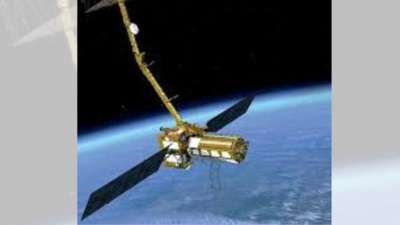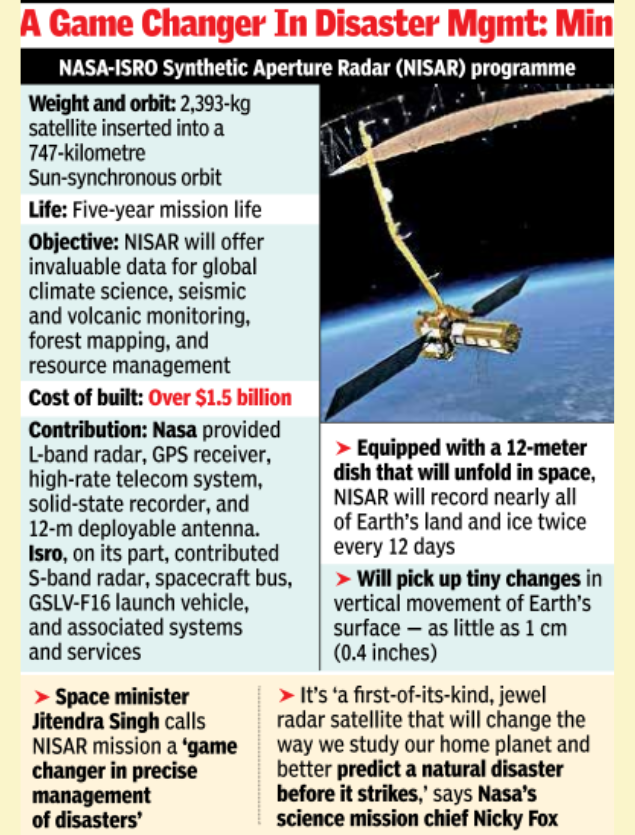NISAR a milestone in Indo-US space ties; space minister says sat will be a ‘game changer in disaster management’ | India News

NEW DELHI: The successful launch of the world’s most expensive and unique earth observation satellite NISAR, jointly developed by US and Indian scientists over a decade, has given a big push to Indo-US space cooperation and has been hailed as a milestone in space collaboration between the two countries under the leadership of US President Donald Trump and Prime Minister Narendra Modi.Wednesday’s launch came weeks after Nasa and Isro successfully collaborated on the Axiom-4 mission, under which Indian astronaut Shubanshu Shukla was sent to the International Space Station for microgravity experiments.Congratulating Isro and Nasa, space minister Jitendra Singh called the NISAR mission a “game changer in precise management of disasters”.In a post on X, he said: “NISAR’s capacity to penetrate through fogs, dense clouds, ice layers, etc., makes it a pathbreaking enabler for the aviation and shipping sectors. The inputs from NISAR will benefit the entire world community…in the true spirit of ‘Vishwabandhu’.” He also expressed pride in being “associated with the Department of Space at a time when Isro is registering one global milestone after the other”.

Isro chairman V Narayanan said NISAR “has brought the two agencies closer than ever before”.Though Nasa began studying concepts for a Synthetic Aperture Radar (SAR) mission, inspired by the National Academy of Sciences’ decadal survey of the agency’s Earth science program in 2007, the US chose to collaborate with India for a huge SAR-based satellite, signing a formal agreement for the NISAR programme in 2014. The then Nasa administrator Charles Bolden and then Isro chairman K Radhakrishnan signed the pact for production and launch of NISAR in Toronto on Sept 30, 2014.Before 2014, US and India had collaborated on a slew of space missions, including the Chandrayaan-1 mission, under which saw Nasa sent its payload (Moon Mineralogy Mapper) on board Isro’s spacecraft for the moon mission, which played a crucial role in finding water on Moon. But the NISAR programme is said to be the first big-ticket ($1.5 billion) satellite mission invested in by both sides. Nasa has contributed L-Band SAR, a high-rate telecommunication subsystem, GPS receivers and a deployable 12-metre unfurlable antenna. Isro, on its part, has provided S-Band SAR payload, the spacecraft bus to accommodate both payloads, GSLV-F16 launch vehicle and all associated launch services.





